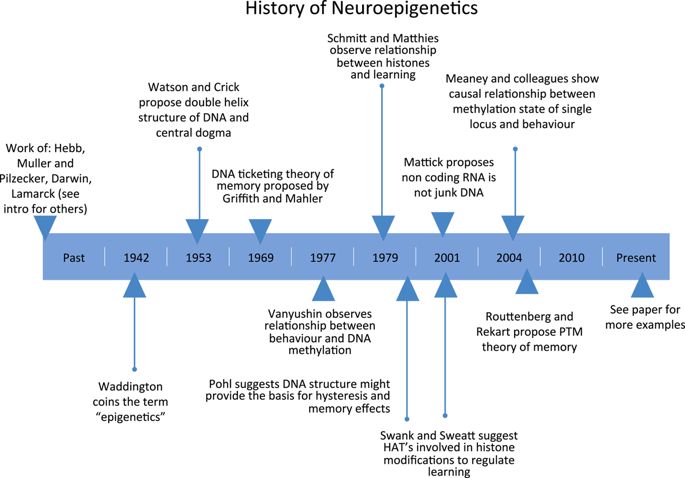npj Science of Learning ( IF 3.6 ) Pub Date : 2016-07-20 , DOI: 10.1038/npjscilearn.2016.14 Paul Marshall 1 , Timothy W Bredy 2

|
A complete understanding of the fundamental mechanisms of learning and memory continues to elude neuroscientists. Although many important discoveries have been made, the question of how memories are encoded and maintained at the molecular level remains. So far, this issue has been framed within the context of one of the most dominant concepts in molecular biology, the central dogma, and the result has been a protein-centric view of memory. Here, we discuss the evidence supporting a role for neuroepigenetic mechanisms, which constitute dynamic and reversible, state-dependent modifications at all levels of control over cellular function, and their role in learning and memory. This neuroepigenetic view suggests that DNA, RNA and protein each influence one another to produce a holistic cellular state that contributes to the formation and maintenance of memory, and predicts a parallel and distributed system for the consolidation, storage and retrieval of the engram.
中文翻译:

认知神经表观遗传学:我们对学习和记忆分子机制理解的下一步发展?
神经科学家仍然无法完全理解学习和记忆的基本机制。尽管已经取得了许多重要的发现,但记忆如何在分子水平上编码和维持的问题仍然存在。到目前为止,这个问题已经在分子生物学中最主要的概念之一——中心法则——的背景下得到了阐述,其结果是一种以蛋白质为中心的记忆观点。在这里,我们讨论支持神经表观遗传机制作用的证据,该机制在细胞功能控制的各个层面构成动态、可逆、状态依赖的修饰,以及它们在学习和记忆中的作用。这种神经表观遗传学观点表明,DNA、RNA 和蛋白质相互影响,产生一种整体细胞状态,有助于记忆的形成和维持,并预测一个用于巩固、存储和检索印迹的并行分布式系统。











































 京公网安备 11010802027423号
京公网安备 11010802027423号